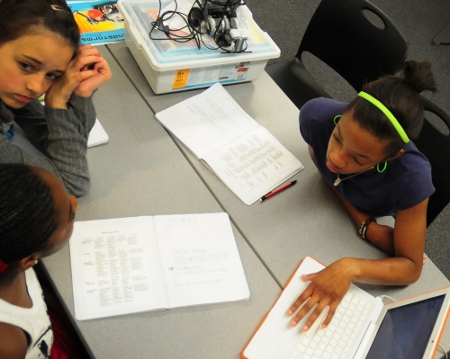Now for Some Good News…

A new study shows an increase in students taking rigorous high school courses and, as a result, scoring higher on achievement tests.
The 2009 National Assessment of Educational Progress High School Transcript Study reveals that the percentage of high school graduates completing a “rigorous” curriculum, with higher-level mathematics and science curricula, jumped from 5 percent in 1990 to 13 percent in 2009, Education Week reports. Those who took a “midlevel” curriculum increased from 26 percent to 46 percent in the same period.
In addition, the study found a link between students’ enrollment in challenging classes and their higher scores on the math and science NAEP in 12th grade.
The high school transcript study, which is conducted every four years, analyzed 37,700 transcripts from 610 public and 130 private schools from a nationally representative sample. Researchers looked at the link between course-taking patterns and student achievement as measured by the national assessment, using a subsample of approximately 30,100 of the graduates who also took NAEP.
The report classifies student course-taking by three curriculum levels: “standard” (at least four credits of English and three credits each in social studies, math, and science); midlevel (standard requirements plus geometry and Algebra 1 or 2; at least two courses from biology, chemistry, and physics; and at least one credit of a foreign language); and rigorous (all the midlevel requirements plus an additional credit in pre-calculus or higher math; courses in biology, chemistry, and physics; and at least three credits in a foreign language).
Although gaps between racial and ethnic groups persist, the study shows more minority students are taking higher-level courses since 1990. The proportion of black graduates attaining a rigorous-curriculum level increased from 2 percent in 1990 to 6 percent in 2009. For Hispanic students, the number rose from 2 percent to 8 percent in the same stretch, and for Asian/Pacific Islanders, it went from 13 percent to 29 percent. Whites, meanwhile, increased from 5 percent to 14 percent. Enrollment in rigorous courses for black and Hispanics students was virtually unchanged from the 2005 study to the 2009 report. At the same time, white enrollment grew from 11 percent to 14 percent, widening the gap.
Filed under: K-12 Education News
Tags: Honors Students, Math, Mathematics, Minority Group Students, Research on Learning








